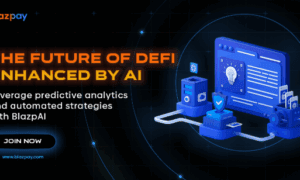In the dynamic realm of Oil & Gas, where precision, efficiency, and cost-effectiveness are paramount, a wave of transformative projects has emerged, revolutionizing the industry landscape. Harnessing the power of cloud computing, artificial intelligence (AI), and advanced data integration, these projects have not only driven multi-million dollar savings but also ushered in unprecedented levels of operational efficiency. Let’s delve into the top five transformative projects that have reshaped the Oil & Gas sector, setting new benchmarks for innovation and excellence.
In the high-stakes, constantly evolving Oil & Gas industry,where precision, efficiency, and cost-effectiveness reign supreme, a select few professionals stand out for their ability to drive transformative change. Among them is Gaurav Kumar Sinha, a visionary leader whose blend of technical prowess and strategic acumen has set new standards for innovation and operational excellence. Sinha’s notable achievements include spearheading major cloud migration projects, such as transitioning critical database platforms to AWS, which resulted in a remarkable 20% reduction in operational costs for a leading Oil & Gas company. By implementing AWS RDS, DynamoDB, and Redshift solutions, he significantly enhanced data accessibility and reliability, thereby revolutionizing the industry landscape. His leadership in harnessing the power of cloud computing, artificial intelligence (AI), and advanced data integration has not only driven multi-million dollar savings but also established new benchmarks for efficiency and effectiveness. As we delve into the top five transformative projects reshaping the Oil & Gas sector, Gaurav Kumar Sinha’s contributions stand out as a testament to what can be achieved through visionary thinking and cutting-edge technology.
In addition, he mentioned a few insights, “I pioneered AI-driven predictive maintenance solutions by developing and deploying AI algorithms that reduced equipment downtime by 15%, generating substantial cost savings.” His collaboration with cross-functional teams to integrate AI models with existing IT infrastructure further improved decision-making and operational efficiency.
His work in data integration and analytics involved designing and implementing a petabyte-scale data warehouse using AWS services such as Redshift, S3, Glue, and Athena. This enabled advanced analytics and real-time data insights, and streamlined ETL processes and data integration workflows, resulting in a 30% improvement in data processing speed and accuracy.
Moreover, data shared by Gaurav, “I conducted comprehensive performance tuning for database systems like SQL Server, PostgreSQL, and MySQL, leading to a 25% increase in query performance and system efficiency. I also devised strategies for high availability and disaster recovery, ensuring 99.99% uptime and robust data protection for critical operations.”
Lastly, he collaborated with major industry players, partnering with top-tier Oil & Gas companies to implement cloud and AI solutions. This fostered strong professional relationships and drove industry-wide innovation. His active participation in industry conferences and forums allowed him to share insights and best practices on leveraging cloud and AI technologies for operational excellence.
Through his work as a crucial member of my organization, he has been able to create a significant impact in various areas, leading to significant improvements in cost savings, revenue increments, and efficiency gains. “One of my key achievements was leading a major cloud migration initiative for a leading Oil & Gas company, which resulted in a 20% reduction in operational costs by transitioning from on-premises databases to AWS services like RDS, DynamoDB, and Redshift. This project alone reduced the annual IT expenditure by $3 million.”
Furthermore, “I implemented AI algorithms for predictive maintenance, reducing equipment downtime by 15%. This increase in production time and output generated an additional $5 million in revenue, highlighting the direct financial benefits of enhanced operational efficiency.” Additionally, he designed and deployed a petabyte-scale data warehouse using AWS services, enabling real-time data insights and advanced analytics. This project improved data processing speed by 30%, leading to a $2 million annual cost saving in data management.
His efforts in database optimization were equally impactful. Comprehensive performance tuning enhanced query performance and system efficiency by 25%, resulting in approximately $1.5 million in annual operational cost savings. “I also developed strategies for high availability and disaster recovery, ensuring 99.99% uptime and robust data protection. This measure prevented potential losses of up to $10 million annually through improved system reliability and data protection.” insights shared by him.
Lastly, he worked closely with various departments to integrate AI and cloud solutions into existing IT infrastructure, fostering a culture of innovation and continuous improvement. This collaboration improved cross-departmental workflows, resulting in a 15% increase in overall productivity, equating to $2 million in efficiency gains.
In another notable project, he developed and deployed AI-driven predictive maintenance solutions for industrial equipment. He mentioned, “By integrating AI models with the existing IT infrastructure, I optimized maintenance schedules and anticipated equipment failures, leading to a 15% reduction in equipment downtime and significant cost savings.”
He achieved measurable success through various projects in cloud computing, AI, and data management. One notable accomplishment was the migration of on-premises databases to AWS cloud infrastructure, which resulted in a 20% reduction in operational costs and annual savings of $3 million. In another project, he implemented AI-driven predictive maintenance algorithms, reducing equipment downtime by 15% and generating an additional $5 million in revenue due to increased production time.
Furthermore, he developed high availability and disaster recovery strategies that ensured 99.99% uptime, preventing potential losses of up to $10 million annually by ensuring system reliability and data protection. Lastly, by integrating AI and cloud solutions into the existing IT infrastructure, he improved overall productivity by 15%, resulting in efficiency gains valued at $2 million annually.
Throughout his career, he successfully navigated numerous challenges, leading to significant achievements in cloud computing, AI, and data management. One major challenge was the migration of a vast and complex on-premises database system to AWS cloud infrastructure, an undertaking never before attempted in the organization. “By leading a cross-functional team and designing a comprehensive migration strategy, we ensured minimal downtime and data integrity, ultimately reducing operational costs by 20% and saving $3 million annually.”
In a notable instance, Gaurav Kumar Sinha tackled the formidable challenge of developing and integrating AI-driven predictive maintenance models in an environment devoid of existing AI infrastructure. Through the creation of custom AI algorithms and close collaboration with IT and operations teams, Sinha successfully reduced equipment downtime by 15%. This innovation not only showcased his technical expertise but also led to a significant boost in revenue, adding an impressive $5 million.
Creating a unified data warehouse capable of handling petabyte-scale data and providing real-time analytics was another unprecedented task. By designing and deploying an advanced data warehouse using AWS services, they improved data processing speed by 30%, saving $2 million annually in data management costs.
Addressing significant performance issues in SQL Server, PostgreSQL, and MySQL databases was critical for operational efficiency. Through in-depth performance tuning and optimization, they enhanced query performance by 25%, leading to $1.5 million in annual cost savings.
Sinha also has an extensive body of published work within the realm of data analytics, machine learning, and their applications in the oil and gas industry. His contributions include a diverse range of research papers, scholarly articles, and other publications. One of his significant works, “A Data Mesh-Driven Data Lake Architecture for Oil Field Data Consolidation,” published in the International Journal of Scientific Research, explores innovative approaches to data integration in the oil field sector. Additionally, his paper “Leveraging Data Analytics in Multimodal Deep Learning for Predictive Maintenance Aimed at Minimizing Rig Downtime,” featured in the Journal of Artificial Intelligence and Cloud Computing, delves into the use of multimodal deep learning for predictive maintenance. He also contributed to advancements in seismic data interpretation with the publication “Enhancing Seismic Data Interpretation through Unsupervised Machine Learning and Data Analytics for Improved Reservoir Characterization,” available in the International Journal of Scientific Research. Another notable work, “Leveraging Satellite Imagery Data Analytics and Deep Learning for Real-Time Monitoring of Offshore Oil Spills,” highlights the application of satellite imagery and deep learning in environmental monitoring, and is also published in the International Journal of Scientific Research.
Drawing from Gaurav Kumar Sinha’s extensive experience in the field, he gained valuable insights into various aspects of data management and technology implementation within the Oil & Gas industry. Cloud integration has emerged as a powerful tool, offering scalable solutions for data management and storage. Through his work in migrating critical databases to AWS, he witnessed firsthand the cost-saving benefits and enhanced accessibility that cloud integration brings. Looking ahead, hybrid cloud environments are poised to gain momentum, offering a balance between public cloud advantages and private infrastructure security.
Advanced data integration and analytics play a crucial role in strategic decision-making and operational excellence. Building a petabyte-scale data warehouse has highlighted the importance of robust ETL processes and real-time analytics in driving business insights. With the rise of IoT and edge computing, the future of data processing and analytics will become more decentralized, providing quicker and more localized insights.
Optimizing database performance is essential for efficient and reliable operations. His experience in performance tuning has underscored the significance of even small improvements in query performance, leading to significant cost savings and efficiency gains. Looking ahead, the adoption of autonomous databases and AI-driven optimization tools will streamline performance tuning processes and enhance performance automatically.
Ensuring high availability and robust disaster recovery plans are critical for business continuity, particularly in industries like Oil & Gas where downtime can be costly. Implementing HA and DR strategies has highlighted their importance in preventing operational losses and ensuring data integrity. Future trends point towards more automated and intelligent disaster recovery solutions that can restore operations swiftly and efficiently with minimal human intervention.
Successful implementation of new technologies requires effective collaboration across various departments and teams. Fostering a culture of innovation and continuous improvement is key to leveraging technological advancements. As technology evolves, the importance of cross-functional teams and collaborative innovation will only grow, emphasizing the need for strong communication and alignment across all levels of the organization.
Looking ahead, he recommends embracing hybrid cloud solutions, investing in AI and machine learning, prioritizing real-time data processing, implementing autonomous optimization tools, strengthening disaster recovery plans, and fostering a culture of collaboration to drive innovation and effectively implement new technologies. These suggestions will help organizations stay competitive and adapt to the evolving landscape of data management and technology integration.

































